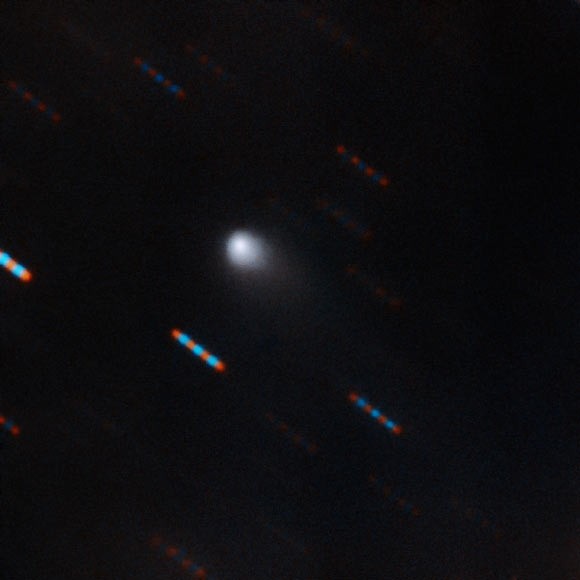
The second comet from outside the solar system is making its way towards the Sun. But this time, it looks very unremarkable—in the sense that it just looks like any other comet from within our solar system.
The comet 2I/Borisov was discovered by a Crimean astronomer named Gennady Borisov on August 30, 2019 and was immediately identified to have arrived from another star system away from our own. Researchers from Jagiellonian University in Krakow, Poland, led by Piotr Guzik, have studied the characteristics of 2I/Borisov as published on Nature Astronomy. Two powerful telescopes were used to take images of the comet: the William Herschel telescope in La Palma, Spain, and the Gemini North Telescope in Mauna Kea, Hawaii. Telescopes are needed to observe the comet since it is not visible to the naked eye.
Scanning through the images taken by the telescopes reveal that the comet's structure is identical to the comets native to our solar system. A coma was identified as the fuzzy haze in the photo, as a result of a cloud of dust forming at the back of the comet when it approaches the sun. A faint tail was also identified, formed from the ionization of gases as a result of approaching the Sun. The nucleus of the comet was characterized to be a reddish color and around 2 km in diameter, both a common color and size among native comets, according to the Nature Astronomy article. The comet possibly came from a star system like ours 13 light-years away called Kruger 60.
What distinguishes 2I/Borisov from the rest of the comets in our solar system is its orbit. Normally, comets would follow an elliptical orbit around the Sun, but data from the research of Guzik's team reveal that the orbit of 2I/Borisov is hyperbolic in shape. The first interstellar comet to be discovered, named 'Oumuamua, was also found to have that distinct hyperbolic path followed by 2I/Borisov. What differentiates 'Oumuamua from 2I/Borisov is its cigar shape that looks nothing like regular comets. This is why Colin Snodgrass from the University of Edinburgh told The Guardian that "[2I/Borisov] appears to be a completely unremarkable comet on a very remarkable orbit." Other than its hyperbolic path, 2I/Borisov can be easily mistaken as a native comet. This is in contrast to 'Oumuamua whose very unique morphology was subjected to debate and conversation since its discovery in 2017.
Research on 2I/Borisov "will be transformative for planetary astronomy and a milestone for astronomy in general" according to Guzik. The research team mentioned that this study is merely a prologue to future research and discoveries of interstellar comets. The comet is still within our solar system and will continue to be observable through the telescope for several months, making the team very enthusiastic of any future developments.
© 2026 ScienceTimes.com All rights reserved. Do not reproduce without permission. The window to the world of Science Times.











